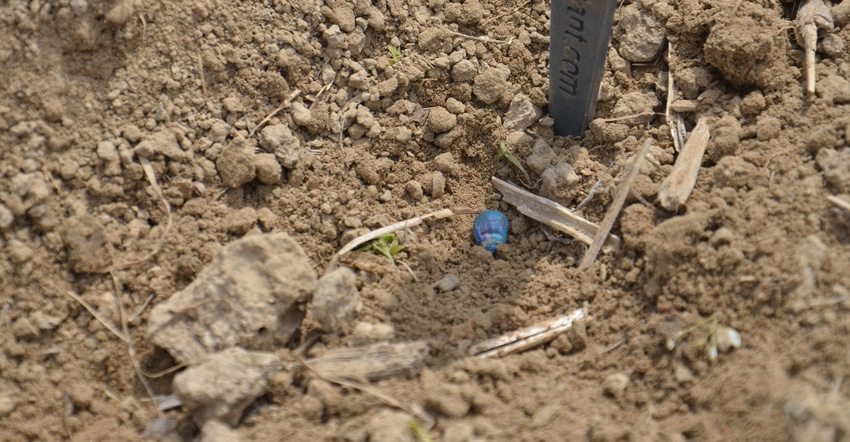
The corn planter rolled in the Corn Watch ’17 field on April 20. This is the field that you can find reports on weekly here, and monthly in the magazine. If it happens in this field, it may also happen in your fields.
This field was located in an area which was relatively dry during the middle two weeks of April. The field was conventionally tilled, and dust was rolling by the time it was planted. The biggest decision the farmer faced before planting this field was how deep to place seed.
The field consists of three distinct soil types: lower, darker medium-textured soil; somewhat poorly drained soil in the middle of the landscape; and lighter-colored soils on top of mild slopes.
Seed depth
The farmer isn’t fond of planting any deeper than 2 inches, especially on April 20. He knows the weather could turn cool and wet. Last year, in fact, emergence problems developed when a cool, wet period developed and lingered for more than two weeks. Some replanting in the area was necessary.
Not knowing if it would rain or not, with showers missing this field over the past week, he wanted to place seed in moisture. To do so he set depth lower than 2 inches — likely 2.25 to 2.5 inches in most places.
Careful digging of planted rows indicated the seed was being placed accurately at the selected depth. In all three soil types, seed was still in moisture. However, on the lighter-colored soil on the slope, it was deeper to moisture, and there was less moist soil above the seed.
As it turns out, it rained over the next couple days after planting, so whether or not seed was in moisture didn’t turn out to be such a critical issue. However, when planting, there’s no way to know if the rain will actually come or not, especially if you’re in a pattern where most showers have been skirting around your area.
Several studies on corn seed planting depth have shown no yield loss for planting seed up to 4 inches deep. The only significant yield difference in a three-year study at the Purdue University Throckmorton Research Center near Romney was in a single year when corn was planted too shallow, about 1 inch deep. However, two of those trials were planted around June 1, and the third during the first week of May.
What’s ahead
The next step along the way to high yields will be determining how evenly the field emerges. Dave Nanda, an independent crops consultant, says higher yields are more likely when seeds germinate uniformly and seedlings within the entire field emerge within 24 to 36 hours of each other. If there are two or more days' difference in plants emerging along the row, some of the later-emerging plants can act like weeds, Nanda says.
Actually, they can be worse than weeds because there is no way to remove them. Weeds can be removed with herbicides. Later-emerging plants may compete for nutrients and light all season, yet not produce a productive ear.
Seed Genetics Direct, Washington Courthouse, Ohio, sponsors Corn Watch ’17.
About the Author(s)
You May Also Like




